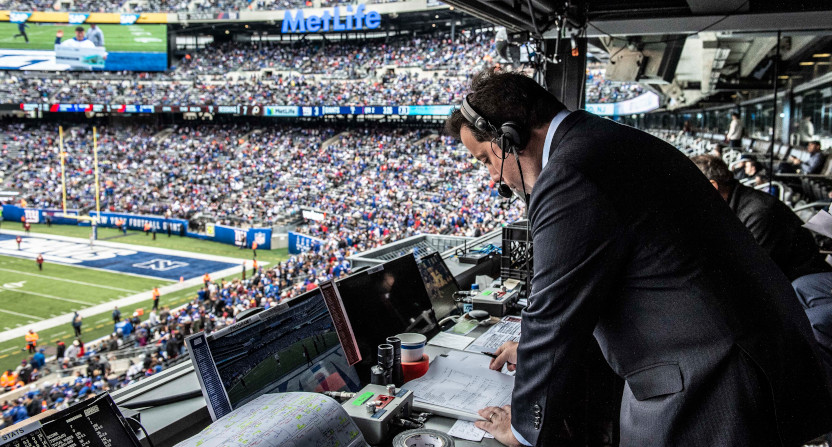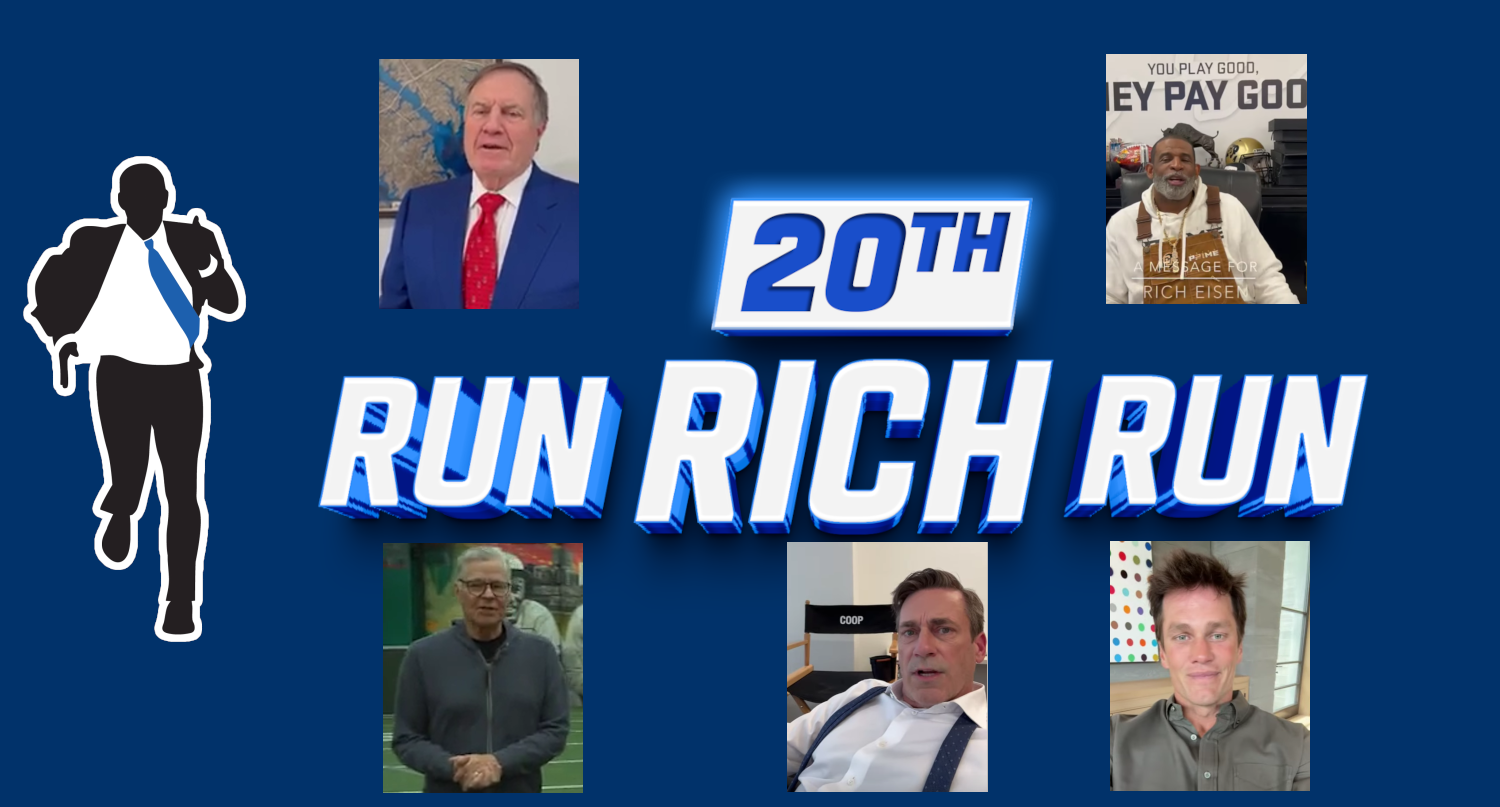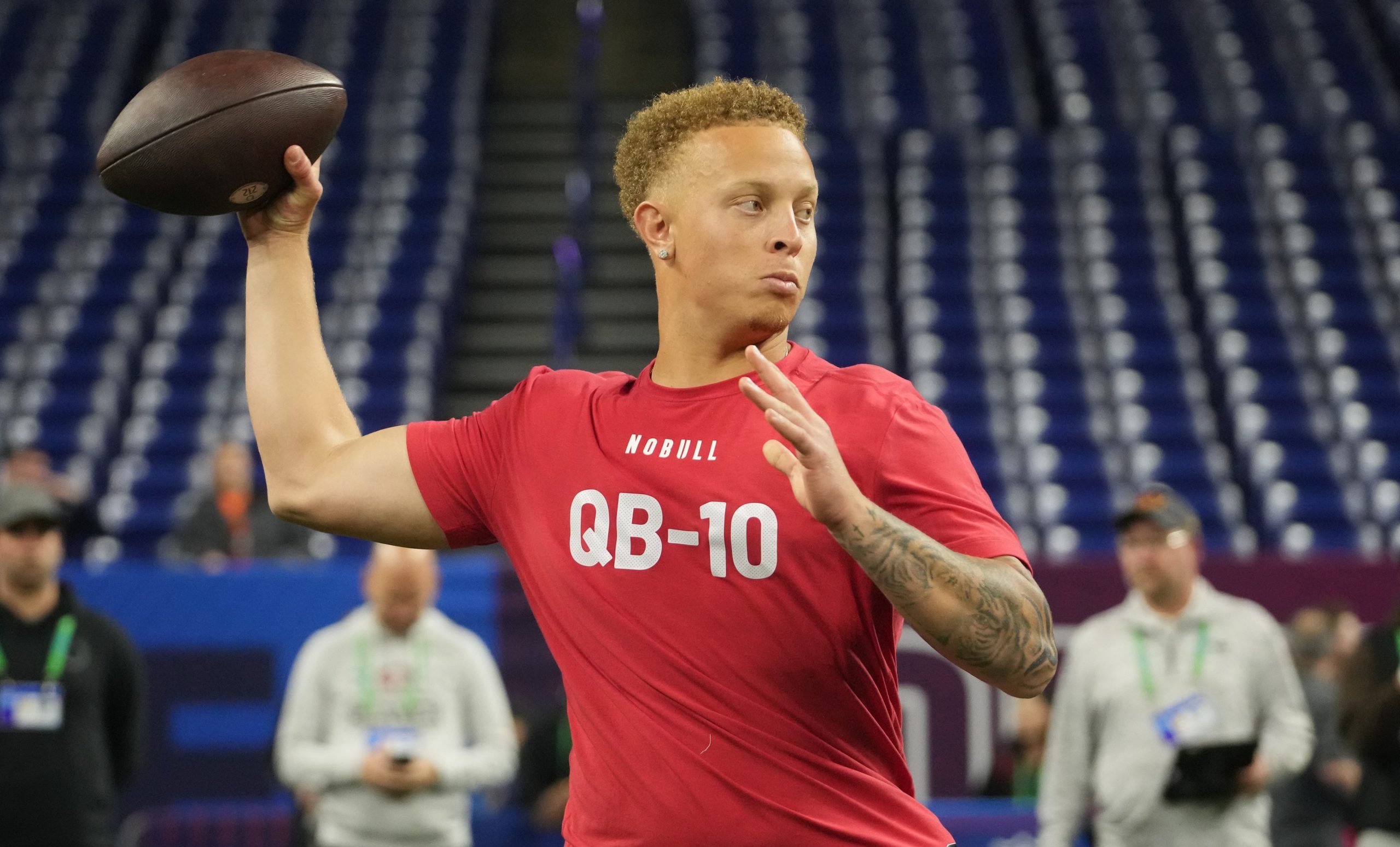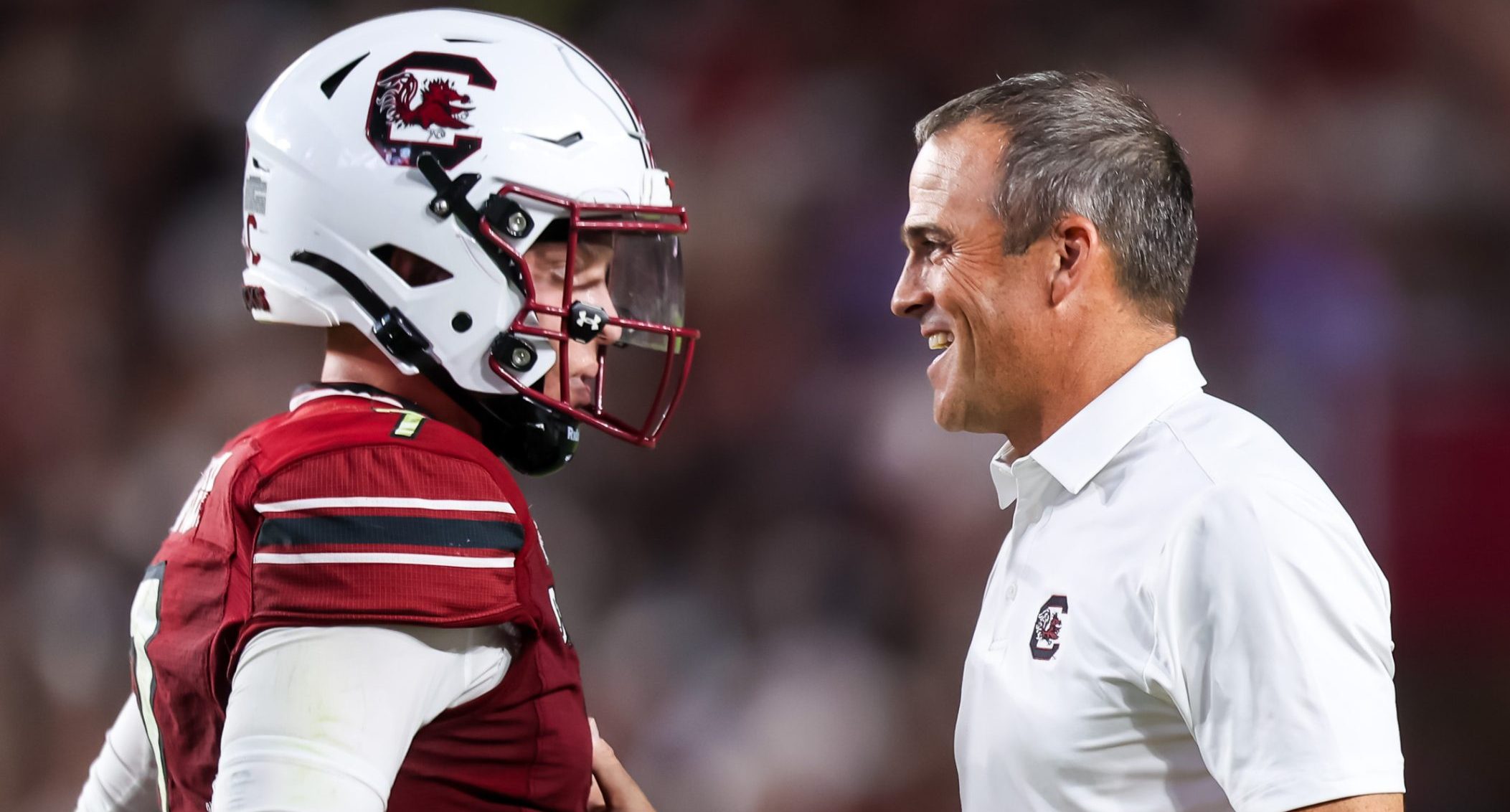With the NFL on Fox entering its 30th season, it’s a good time to look back at how it changed the sport. And one notable element there is how Fox winning NFL rights (specifically, winning the NFC package from incumbent CBS) ahead of the 1994 season completely changed who was calling NFL games. The only remaining NFL on Fox announcer who has been there for all 30 of their seasons is Kenny Albert, who spoke to Awful Announcing recently ahead of this year’s coverage. And he said he remains thrilled that Fox took a chance on him and fellow young guns Joe Buck, Thom Brennaman, and Kevin Harlan in 1994.
“We were all so fortunate. So many of us were in the right place at the right time. Rupert Murdoch made this crazy bid for the NFC, stole it away from CBS after 38 years. And Fox decided to take a chance on four young play-by-play announcers and a number of young color analysts. They also hired, obviously, John Madden and Pat Summerall, and Dick Stockton and Matt Millen were the number-two crew, but then they took a huge gamble.”
“David Hill and Ed Goren and George Krieger at the time were the top three executives. They also hired Kevin Harlan, who was a little older than us (34) and had been doing the Kansas City Chiefs’ radio. But myself and Joe Buck (25) and Thom Brennaman (31), they took this really big gamble. And I’m proud to say that 30 years later I’m one of the only ones left at Fox, along with Howie Long and Terry Bradshaw, from that first year from the broadcasting side.”
“And Joe’s obviously had a Hall of Fame career, Thom at Fox for 25-plus years, Kevin Harlan’s had a brilliant career, first at Fox and then moving over to CBS and Turner. So they really took a shot on at least three of us who didn’t have a lot of football experience.”
He said he’d always wanted to be an announcer, but never really considered the NFL early on given that pre-Fox, that was a gig for well-established broadcasters only.
“I love all sports. I would announce all four into a tape recorder when I was a kid, set up my bedroom like a studio and have the game on TV and the desk and the bed in the middle, and I would announce all four of the sports. And I would take [the recorder] to games when I could. So I loved all of them, but then as time moved along, in college, I went to NYU, and we had a really good Division III basketball program, so I announced those games, but that was really it in college. And then the Wagner football games, I had that opportunity as well.”
“But hockey on the radio, that was the goal for me. And at that point, before the Fox deal with Murdoch, everybody doing the NFL at that point, whether on CBS, NBC, ABC, were all in their 40s, 50s, 25-year veterans. It wasn’t even a thought for any of us! Just because it didn’t happen back then. And by virtue of us all being in the right place at the right time, we started at crazy young ages. And to be a part of calling NFL games for 30 years, it’s crazy.”
Albert said Fox put all of them in a position to succeed, though.
“But at the time, I think the executives at Fox instilled the confidence in us by hiring us. And they put excellent production people around us, many of whom had come from CBS. And we all kind of learned together again. Thinking back to that first year with [analyst] Ron Pitts, we were on lower games, which didn’t go to a big portion of the country, but they were still NFL games!”
He said it’s fun for him to look back at those days, and it seems odd to think that it was so long ago.
“It does feel special for those of us who have been there right from the start. It’s really hard to believe, it’s crazy, that A. it’s been more than half of my life, I’m 55 now, and B. just to think back to memories of that first year of 1994, the entire process. Going out to Los Angeles, which I did in March of 1994 with James Lofton, and meeting the executives, and after we were all hired, going back out in June for a couple of events and get-togethers with the folks at Fox, and then the first football seminar we had that summer out in Anaheim, and then the first game, which was 9/4/94.”
That first game, and even the pre-game meetings ahead of it, still stands out in Albert’s mind. And some of that was about dealing with the famed figures who were the head coaches.
“It was the first regular season game; we had done a rehearsal game during preseason. A lot of the hundreds of games through the years have kind of run together. But that first game, it was in Anaheim, the Cardinals against the LA Rams, still in LA before they moved to St. Louis the next year.”
“It was Buddy Ryan’s first game as the head coach of the Cardinals. I remember so vividly meeting with the Rams Friday, going out to their practice, Chuck Knox was the head coach. And it was myself and Ron Pitts, who was my partner at the time, and I was 26, Ron was probably about 30 (ed note: close! Pitts was actually 31 then), I remember sitting there in the meeting with Chuck Knox and he’s probably looking around and thinking to himself ‘Who are these guys? They look like college kids.'”
“And then Buddy Ryan the next day, pretty intimidating figure at that point in his career, walking into the meeting with us as well. It was a 14-12 final score, Jerome Bettis scored a touchdown, he was either a rookie or second-year Ram at the time (ed. note: second-year is correct), I remember Todd Lyght had a long (74-yard) interception return, Steve Beuerlein was the Cardinals’ starting quarterback. So I remember a lot about that first game.”
And that game set up Albert for quite a run, which saw him working with a lot of different analysts.
“Our crew went on to work 10 games that first season, we were one of the lower crews in the pecking order,” he said. “And then the next year I worked with Anthony Muñoz, then started seven years with Tim Green after that, four with Brian Baldinger, 10 with Moose Johnston, we had Tony Siragusa with us for eight of those years, Ronde Barber for three, and now Jonathan Vilma for four. It’s just amazing how fast it’s gone, it’s crazy. It’s really hard to fathom that it’s been 30 years.”
Albert said right from the start, Fox looked to innovate in certain respects, and that included their hiring of younger voices. But they also maintained continuity with what viewers expected by bringing in Pat Summerall and John Madden as their top team and Dick Stockton and Matt Millen as their second team.
“The motto was ‘Same game, new attitude.’ And at that very first seminar, they showed us the commercials, and the promos, and various players. I remember Sterling Sharpe was involved and some other players at the time. The fact that they hired John Madden and Pat Summerall, that kind of set the tone.”
“When Fox and Rupert Murdoch made this crazy bid, there were a lot of doubters in the media who were wondering ‘Who’s going to be in the booth, Marge Simpson? Al Bundy?’ But by hiring John and Pat, that set the tone; these were guys who had done Super Bowls, came over from CBS. They hired Sandy Grossman and Bob Stenner, the director and producer who had worked with John and Pat for many years. They had that really solid second crew with Dick Stockton and Matt Millen.”
Albert said Madden and Summerall in particular provided such a boost to the NFL on Fox reputation, and that translated down through the organization.
“With John and Pat leading the way in the early years, that’s what set the credibility right from the start. When people tuned into a football game and heard those voices, they knew it was a good game.”
He added that Madden also deserves credit for starting the extensive tradition of pre-game broadcast meetings that continues to this day, and for boosting the prominence of watching film.
“I think that started with John Madden at CBS. Prior to that, TV crews would meet with the public relations person and the head coach. But John, he’s really the one who was a pioneer as far as meeting with both teams and watching film. Back in the early days, for the first 10-15 years, we’d all sit as a group after practice and meetings at the home team facility and watch film for about an hour or two. It was a great learning experience.”
“And whoever the analyst was that I was working with, they would pull out certain aspects that I wasn’t trained to look for as the play-by-play announcer. It really led to the sharing of thoughts between the analyst, myself, the sideline reporter, the producer, the director. That’s when we’d get the conversation started about some of the themes that we might want to get into during the game.”
Beyond the announcers, Albert said Fox deployed many notable technical innovations we now see elsewhere.
“That motto, ‘Same game, new attitude,’ they tried a lot of new things. Number one in my mind, which David Hill gets total credit for, is the Fox Box, the score and time in the top-left corner. Prior to that, when anyone watched sporting events, the score would only be flashed up occasionally, they wouldn’t have it up there all the time. And I remember other networks resisted because they thought if viewers clicked over and saw that it was a blowout, they would change the channel.”
“They didn’t want people to know the score all the time. So in a basketball game, if it was 90-65, you might not keep it on, if you don’t know, you might keep it on for a couple minutes. But David Hill, I remember hearing the story many times of his kids over in Australia and England when he was working over there, they played video games, and video games had the constant score up. That was one of the major aspects from the early years, Year 1, that Fox introduced.”
Read on for Albert’s thoughts on other Fox innovations, game preparation changes, his own background, and more.







